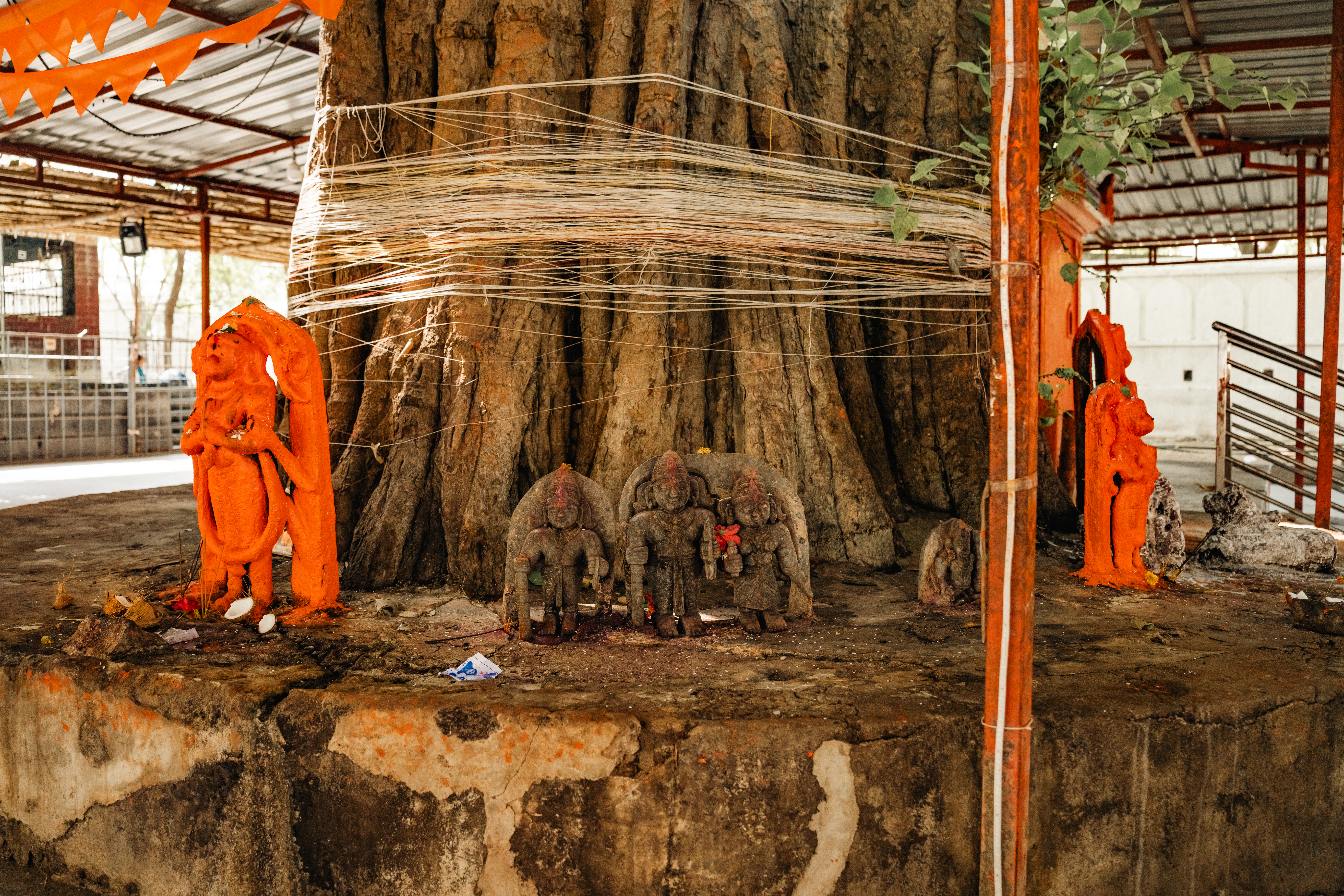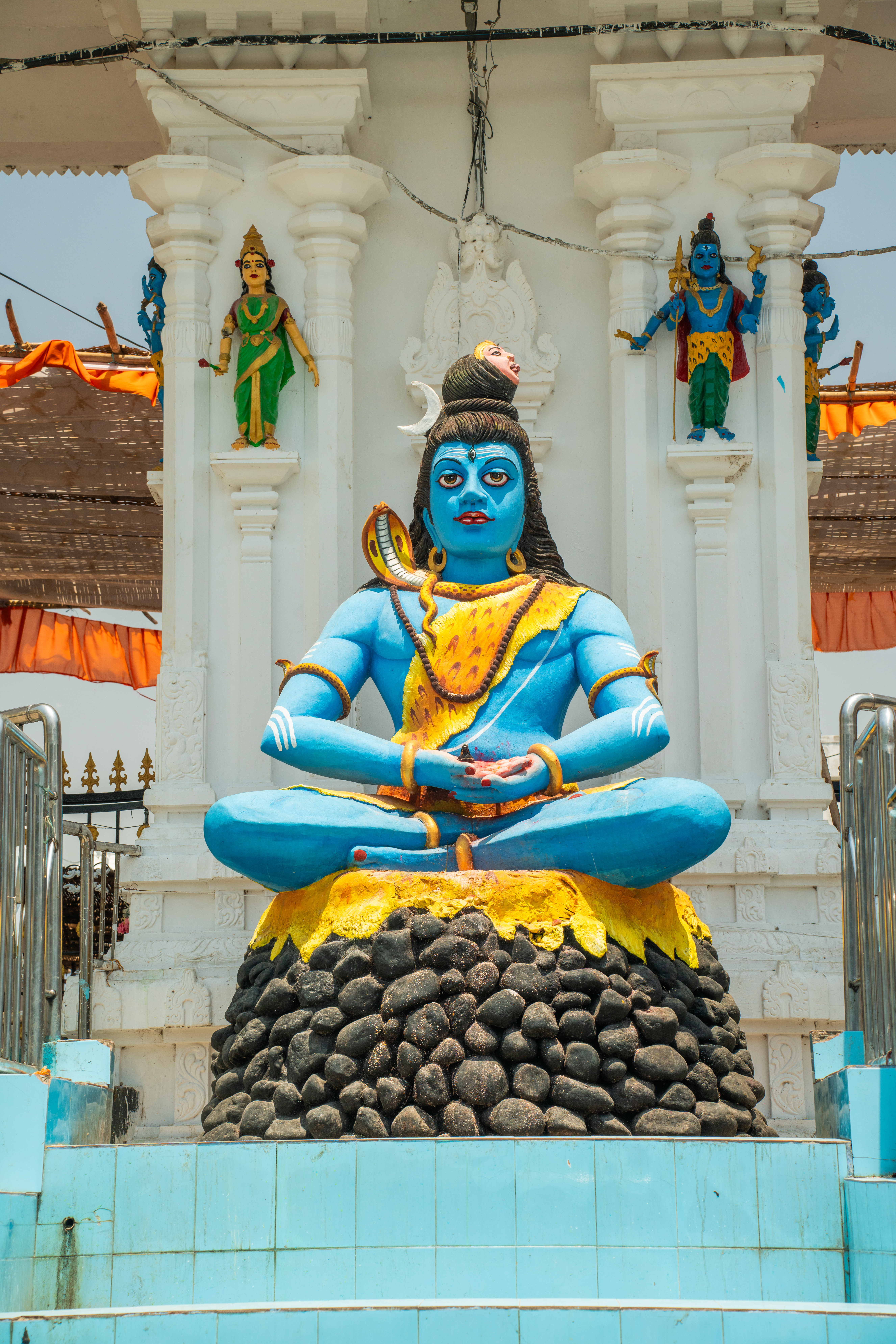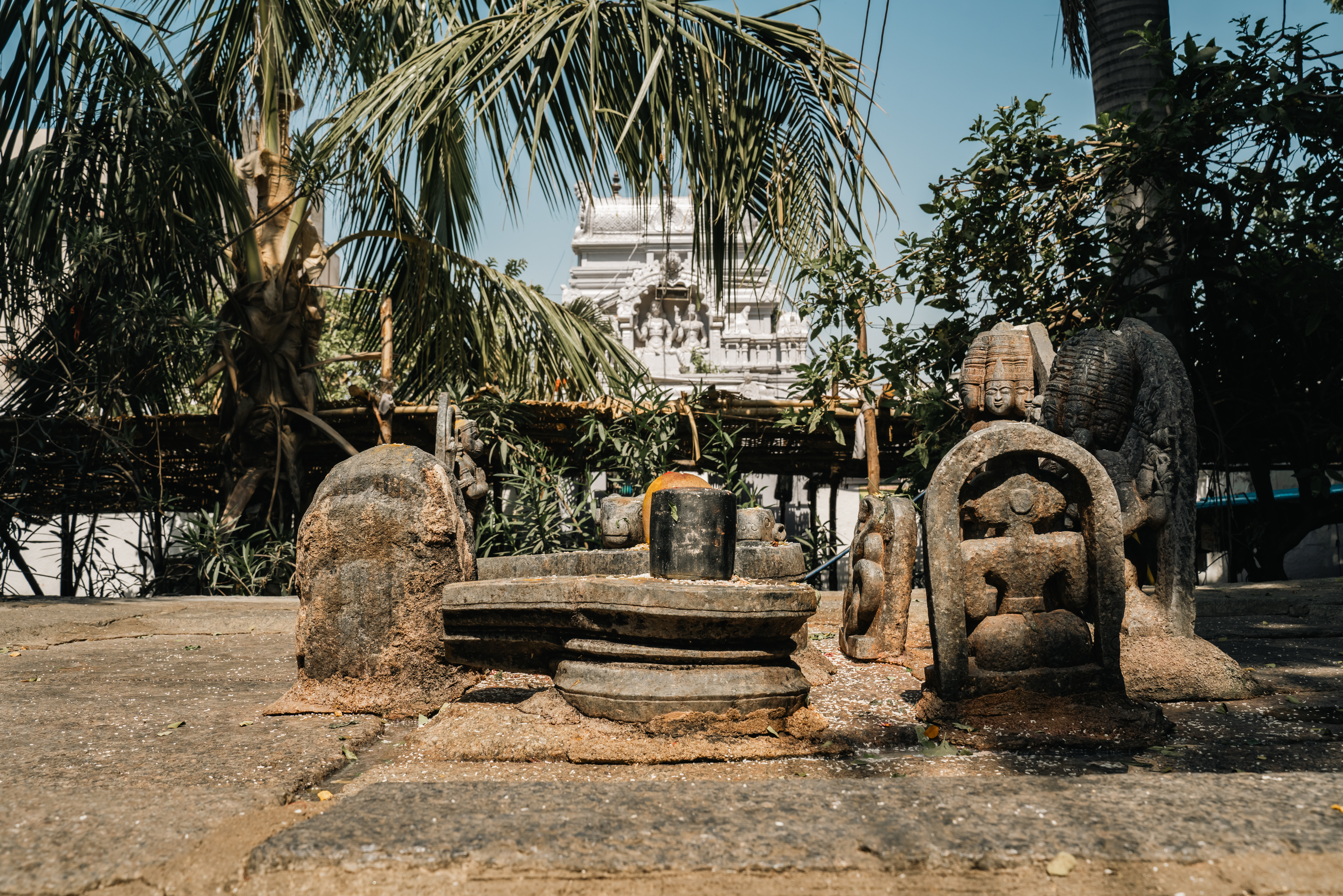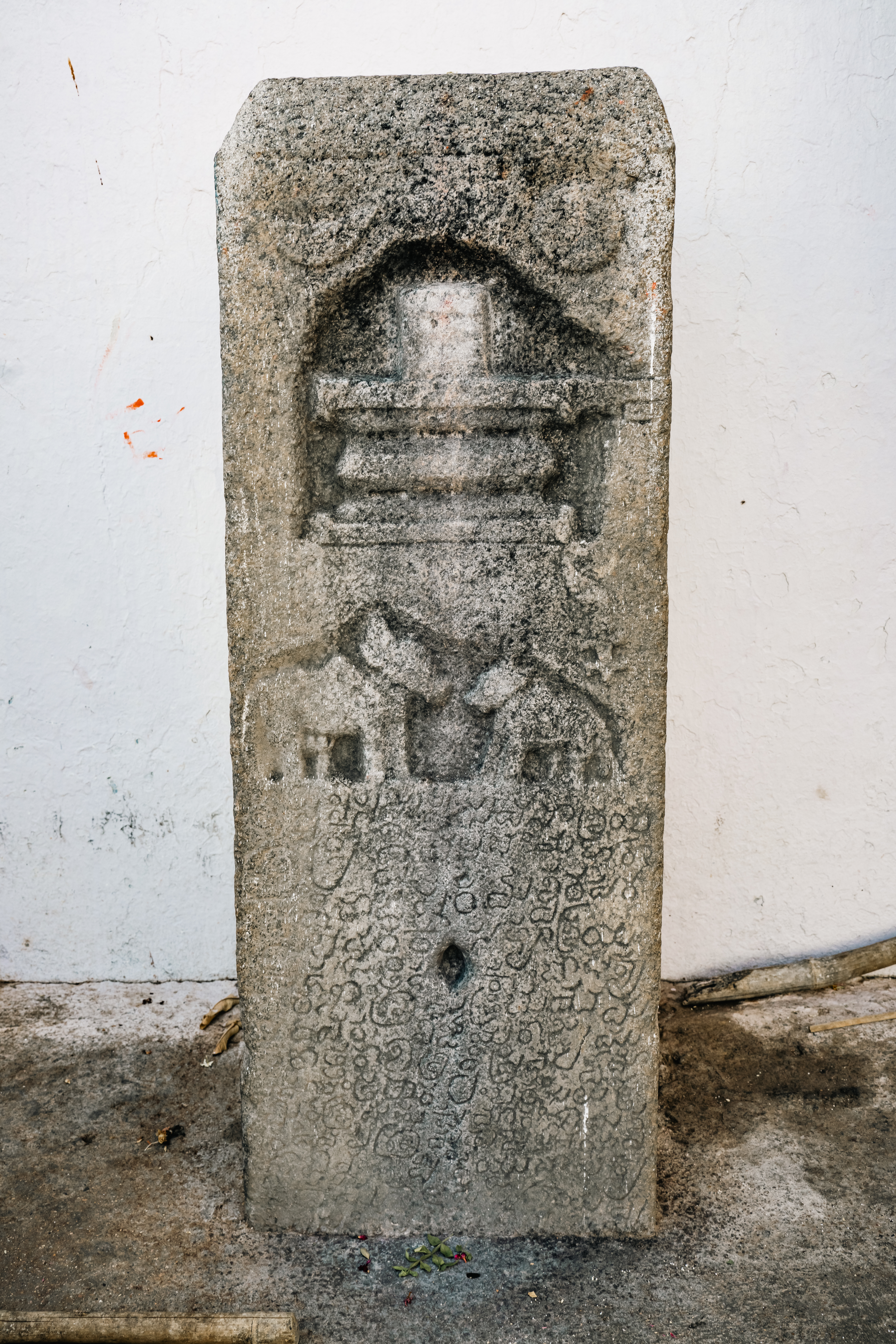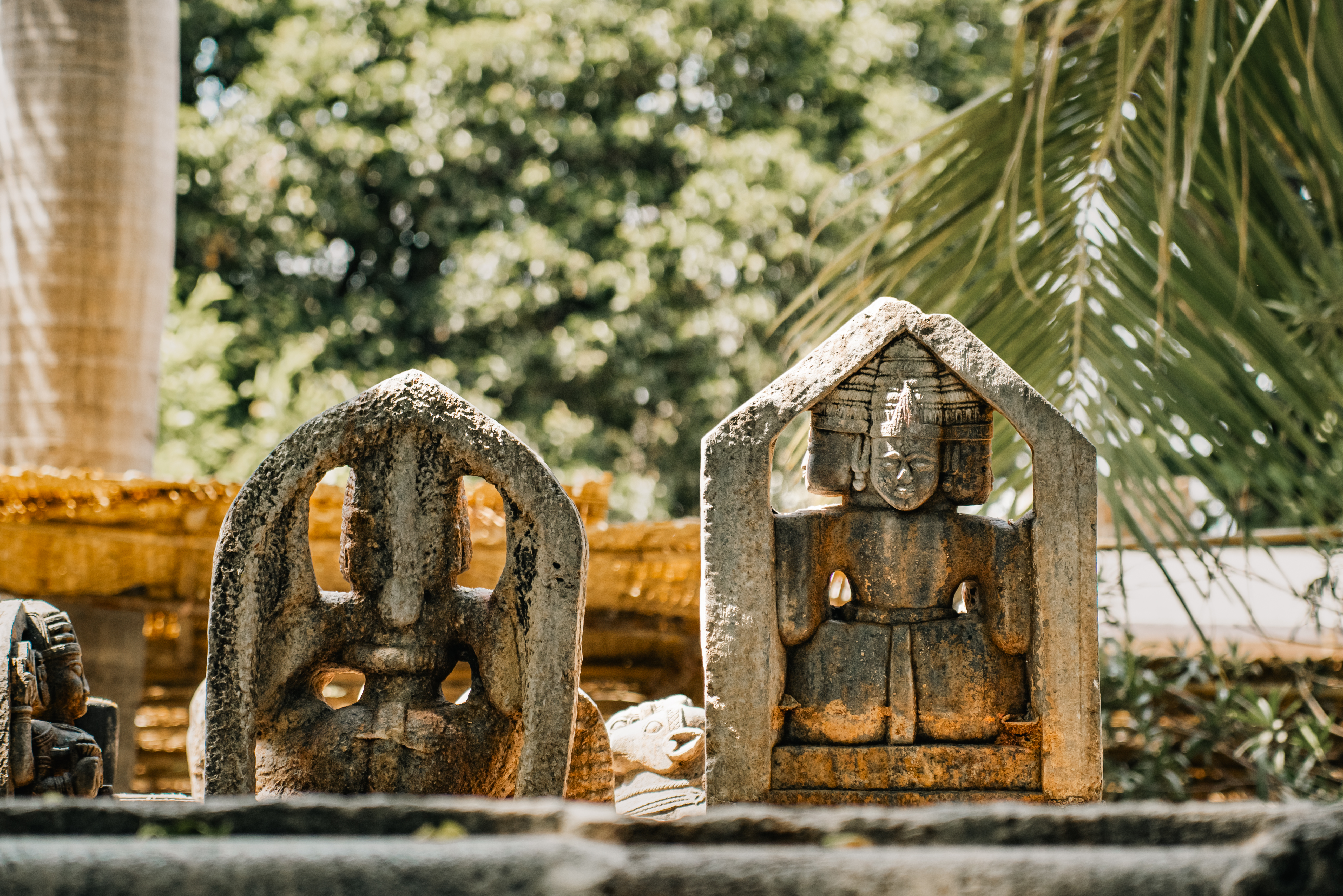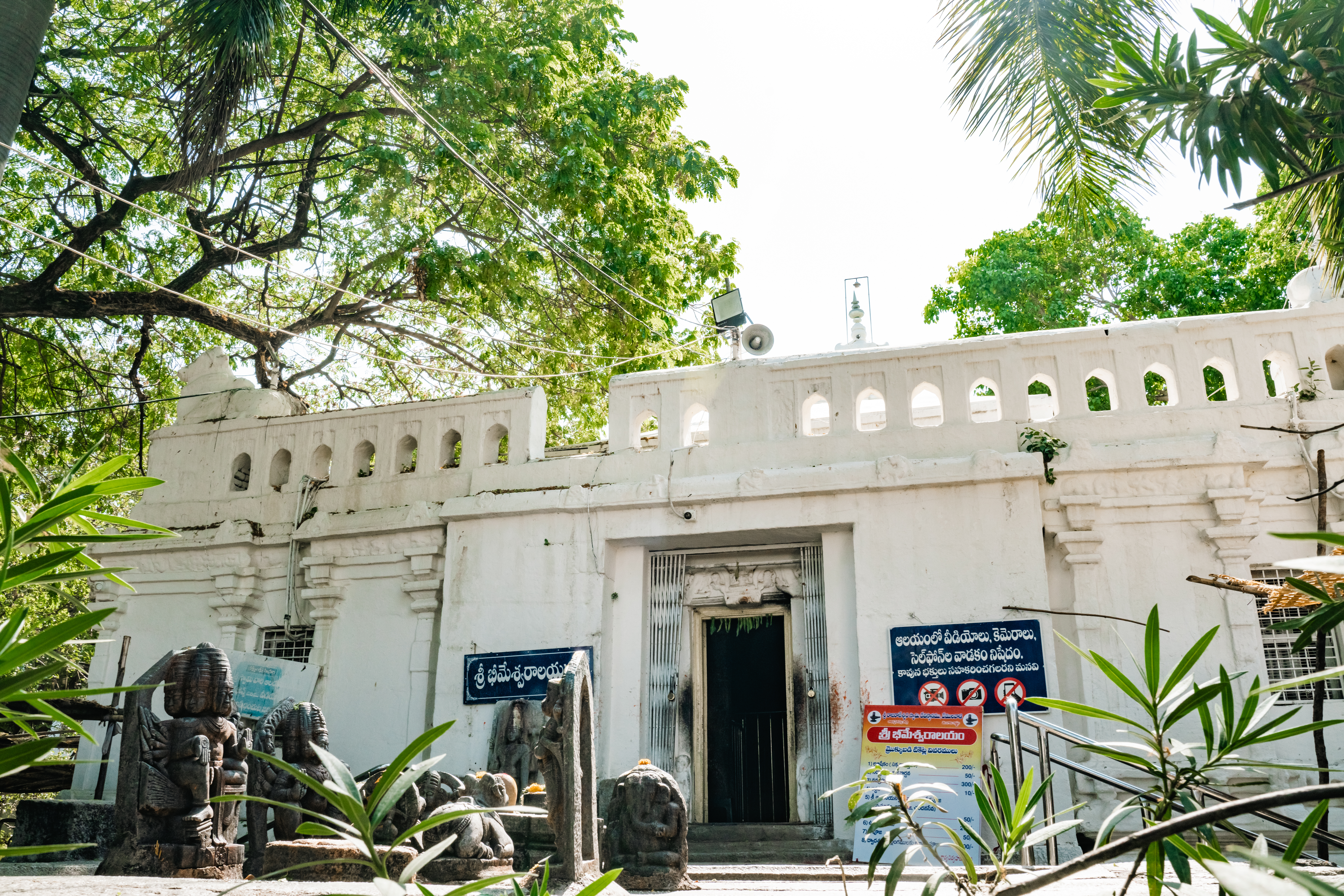Worshipped in the form of Neela Lohitha Siva Lingam, Lord Raja Rajeshwara is known for his boundless benevolence in fulfilling devotees' wishes. The temple, located on the bank of Gudicheruvu, includes several smaller shrines, the most notable being the Sri Anantha Padmanabha Swamy Temple (a form of Vishnu with Krishna murti) and the Sita Ramaswamy Temple. Other shrines are Sri Anjaneya Sahitha Kasi Visweswara Swamy Temple, Sri Dakshina Murthy Temple, Sreeevalli Devasena Sametha Subramanya Swamy Temple, Sri Bala Tripura Sundari Devi Temple, Sri Someshwaralayam, Sri Uma Maheshwaralayam, Sri Mahisasura Mardhani Temple, Kotilingalu, and Sri Kala Bhairava Swamy Temple. The temple also features a Dargah within its precincts, standing as a testament to religious tolerance and harmony. Architectural marvels and festival celebrations: The temple's entrance is marked by a grand South Indian-style gopuram, leading to the shrine situated at the town's center. The Garbha Griha (Mahamandapam) houses Sri Lakshmi Ganapathi, Lord Raja Rajeshwara as Neelalohitha Siva Linga, Goddess Sri Raja Rajeshwari Devi, and Nandeeshwara. The temple celebrates both Shaivite and Vaishnavite festivals, with Shivratri being the major festival, followed by Sreerama Navami. The temple also features a holy tank called Dharma Gundam, whose waters are believed to possess medicinal properties. Historical Significance: The temple's history spans from the 9th to the 10th centuries, with significant contributions from the Vemulawada Chalukyas. The place was the capital of the Vemulawada Chalukyas, who ruled from AD 750 to AD 973. Narasimha I of the Chalukyas of Vemulawada held the title of Rajaditya, and thus named the temple after him. The site is also associated with famous poets such as Telugu poet Bheemakavi and Kannada poet Pampa, who dedicated his "Kannada Bharatha" to his royal patron, Arikesari II. Legends and lore: According to legend, Lord Indra, after killing Vrithasura at the risk of brahma-hatya (killing a brahmana), visited many holy places but could not purify himself from the sin of killing a brahmana. On the advice of the gods' guru, Bruhaspathi, he visited Sri Raja Rajeshwara kshetram, took a holy dip in Dharma Gundam, and received blessings from Lord Sri Raja Rajeshwara, ushering him into golden age. Another tale tells of King Sri Raja Raja Narendra, who, while hunting, accidentally killed a Brahmin boy, resulting in Brahma-hatya. Consequently, he contracted an incurable disease. He visited many holy sites in his quest for healing before finally drinking from Dharma Gundam and praying to Lord Sri Raja Rajeshwara Swamy, which led to his overnight cure. It is said that in his dreams, Lord Shiva instructed him to retrieve the lingam from Dharma Gundam and enshrine it in a temple. Cultural Harmony: A remarkable feature of the temple is the presence of a Muslim saint's tomb within the temple premises, making it a rare site of communal harmony where both Hindus and Muslims offer their prayers.
|
To Be Updated
